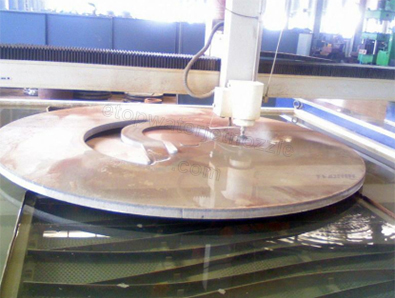
(1) Try to use new emulsion during processing. When choosing emulsion oil, it is better to choose DX-3 type wire cutting emulsion oil or DX-4 type wire cutting working fluid. The impurities in the old emulsion are difficult to filter out, while the copper material is soft and sticky, which not only reduces the impact of the working fluid, but also affects the conductivity of copper during processing. These phenomena can be avoided by using new emulsions. Moreover, the working fluid recommended above has good electrolytic property and wide cutting seam. If a higher wire feeding speed is adopted at the same time, it is more conducive to chip removal.
(2) Remove the short circuit. When the impurities in copper are encountered during the processing, it can be seen that the ammeter is very unstable, and the current instability will cause a short circuit, if not handled correctly, it will cause wire breakage. At this time, we should adopt the processing method of "high current and high pulse width" (the general power tube is in 4th gear and the pulse width is 40s) to enhance the power. The impurities in copper can be broken down by the pulse energy. Of course, it is also necessary to increase the pulse to pulse and the pause time, so that the processing can continue. At the same time, the use of large pulse width (generally 40 s) also ensures that the discharge energy will not be lost due to the good thermal conductivity of copper. If there is short circuit in the processing method of "high current and high pulse width", the short circuit can be eliminated overnight by "solution and water infiltration cleaning method". The specific operation is: when the short circuit occurs, first let the aluminum wire back a little distance, then turn off the automatic, high-frequency and working fluid pump switches, dip a small brush with a solvent such as kerosene or engine oil with strong permeability, and constantly let it penetrate into the cutting seam with the moving aluminum wire. Until the aluminum wire at the upper end of the workpiece can move back and forth. Then, turn on the working fluid pump and the high frequency and automatic switch, recover the discharge by relying on the vibration of the aluminum wire itself, and let the processing continue.
(3) The clamping direction of electrode shall be considered according to the actual situation. In the fast wire water cutting process, the clamping direction should be determined according to the shape and accuracy requirements of the electrode. The shortest side of the water cutting processing route should be clamped in the third direction of the optimal and negative direction as far as possible), so as to minimize the X negative direction of the aluminum wire, so as to reduce the probability of wire breakage.